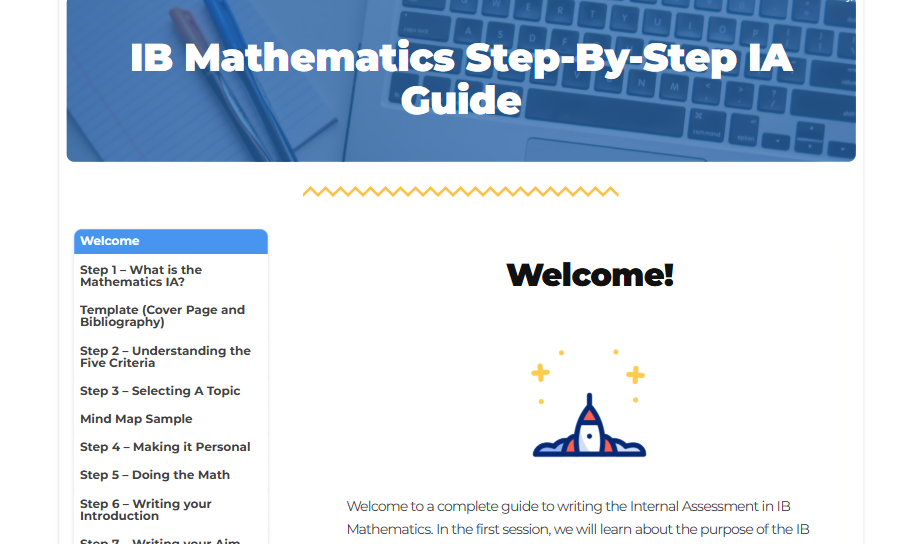One of the most important—and overlooked—strategies for success in IB Economics Paper 1 is the intelligent and strategic use of real-world examples. IB Economics Real World Examples aren’t just optional illustrations to “spruce up” your answer—they are essential. In fact, without strong real world examples (RWEs), your Part B response will likely earn only a fraction of the possible marks. Examiners are very clear about this: to access the top bands, students must demonstrate the application of theory to real-world situations.
Taking An Exam Soon?
Try Out Our Revision Resources For Free
Microeconomics Real World Example Bank
This table provides a structured overview of various microeconomic concepts with real-world examples, each linked to a specific geographical location and time period. Simply browse the concept and get an example. Enjoy!
| Microeconomic Concept | Specific Example | Description | Location | Year |
|---|---|---|---|---|
| Shift of Demand to the Right | COVID-19 Pandemic and PPE | Global surge in demand for personal protective equipment like masks and hand sanitizers due to the COVID-19 pandemic. | Global | Early 2020 |
| Shift of Demand to the Left | Declining Coal Demand in the US | Steady decline in coal demand in the US due to environmental concerns and the rise of alternative energy sources. | United States | From 2010 |
| Shift of Supply to the Left | 2011 Thailand Floods and Hard Drives | Floods in Thailand severely impacted the global supply of hard disk drives, a key component for computers. | Thailand | 2011 |
| Shift of Supply to the Right | Solar Panel Production in China | China’s significant investment in solar technology led to a substantial increase in the global supply of solar panels. | China | From 2010 |
| Consumer Nudges in Action | UK Pension Auto-Enrollment | The UK government introduced an automatic enrollment scheme for employee pensions, significantly increasing participation. | United Kingdom | 2012 |
| Price Elasticity | Gasoline Demand During 2008 Financial Crisis | Notable shifts in consumer behavior regarding gasoline consumption, reflecting its price elasticity during the 2008 crisis. | Global | 2008 |
| Price Floor | Minimum Wage in Seattle | Seattle implemented a $15 per hour minimum wage, a government-mandated price floor ensuring a living wage for workers. | Seattle, USA | 2021 |
| Price Ceiling | Venezuela’s Price Controls | Venezuela imposed price ceilings on basic goods like food and toiletries in 2014, leading to widespread shortages. | Venezuela | 2014 |
| Indirect Tax | GST in India | India’s implementation of the Goods and Services Tax (GST) in 2017, replacing multiple indirect taxes with a single tax. | India | 2017 |
| Ad Valorem Tax | VAT Increase in the UK | The UK increased its Value Added Tax (VAT) from 17.5% to 20% in 2011. | United Kingdom | 2011 |
| Subsidy | US Corn Industry for Ethanol Production | U.S. government subsidies to the corn industry, particularly for ethanol production, especially increased in the early 2000s. | United States | Early 2000s |
| Regulation/Legislation | Affordable Care Act in the US | The Affordable Care Act (ACA), implemented in 2010 in the United States, significantly restructured the healthcare market. | United States | 2010 |
| Negative Externalities | Deepwater Horizon Oil Spill | The Deepwater Horizon oil spill in 2010 in the Gulf of Mexico, causing significant environmental damage. | Gulf of Mexico | 2010 |
| Positive Externalities | Public Wi-Fi in Taipei | Taipei’s implementation of public Wi-Fi since 2014 enhances public internet access, creating positive externalities. | Taipei, Taiwan | From 2014 |
| Perfect Competition | Canadian Wheat Market | The wheat market in Canada, especially in the 2000s, is an example of perfect competition with many producers. | Canada | 2000s |
| Monopoly | De Beers in the Diamond Industry | De Beers’ historical dominance in the diamond industry until the early 2000s. | Global | Until early 2000s |
| Monopolistic Competition | Coffee Shop Market in London | The coffee shop market in London with various brands like Starbucks, Costa Coffee, and local cafes since the 2010s. | London, UK | 2010s |
| Oligopoly | Boeing and Airbus in Aircraft Market | The dominance of Boeing and Airbus in the commercial aircraft market, particularly evident in the 2010s. | Global | 2010s |
Need The Full List of IB Economics Real World Examples?
Get Started For Free
Why Are IB Economics Real World Examples So Important?
In Paper 1, especially Part B, you are expected to evaluate an economic situation, policy, or problem using both theory and evidence. Theory alone isn’t enough. You have to demonstrate that you understand how economic principles play out in practice. This is where real world examples come in. They serve as the evidence in your argument. Without them, your answer lacks depth, credibility, and relevance.
Furthermore, the markscheme explicitly rewards examples. If your essay doesn’t include a well-developed, relevant real world example—especially in Part B—it will be capped at a lower level. That means even if your evaluation is well-structured and your theory is spot-on, you won’t break into the top mark bands without an RWE.
How to Use Real World Examples in Your Response
The most effective students introduce their real world example early—ideally, within the first few lines of Part B. This not only grounds the essay in a practical context from the beginning, but it also signals to the examiner that your answer is going to meet the criteria for higher-level marks.
From there, continue to refer back to your example throughout your analysis and evaluation. Use it to support your argument, highlight impacts, and show nuance. The goal is not to tack on an example at the end like an afterthought. Instead, your example should anchor your response—providing the foundation for your analysis and the lens through which you evaluate theory.
What Makes a Strong IB Economics Real World Example?
A strong real world example should be:
Recent: Within the past 5 years is ideal. Examiners appreciate up-to-date knowledge.
Specific: Include actual data, percentages, names of policies or programs, and dates when possible.
Relevant: Choose examples that directly relate to the question’s topic. A great minimum wage case won’t help you on a question about inflation targeting.
Memorable: It helps if your examples are easy to remember, especially under exam conditions.
For instance, saying “the UK raised its minimum wage in 2022 by 6.6% to help counteract inflation” is far more effective than vaguely mentioning “a country increased the minimum wage.”
Final Tip: Practice Using Them!
Don’t just memorize facts—practice integrating them into your writing. Make it second nature to pair every piece of economic theory with a real world counterpart. When writing mock Paper 1 essays, treat your RWEs as essential puzzle pieces, not decorations. If you need more information about the economics assessment, please visit https://ibo.org/
ib economics real world examples ib economics real world examples ib economics real world examples ib economics real world examples ib economics real world examples ib economics real world examples ib economics real world examples ib economics real world examples




 IB Economics Revision Notes
IB Economics Revision Notes
